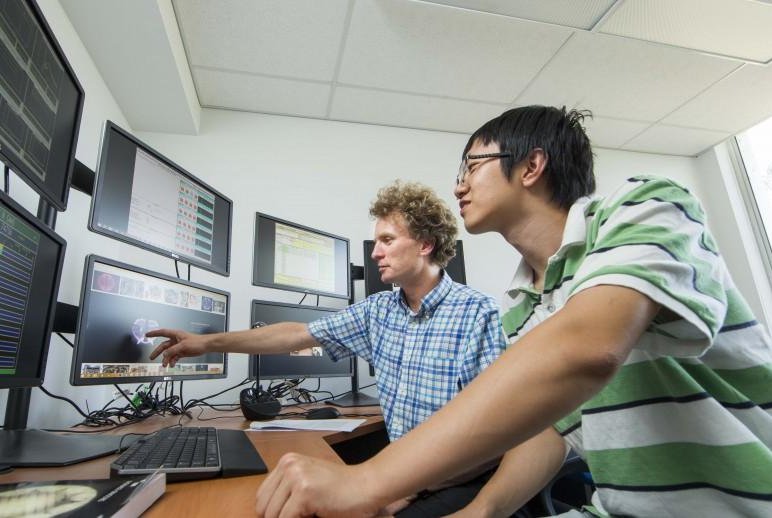Physicists Matthew Hole, on the left, and Zhisong Qu work on their nuclear fusion models at Australian National University. Photo by Stuart Hay/ANU
ACTON, Australia, March 7 (UPI) -- Some scientists believe fusion power -- the energy that powers the stars -- is the future of sustainable energy.
Despite periodic breakthroughs, physicists have struggled to replicate the reaction in the lab. New research suggests scientists may have cleared another hurdle en route to synthesizing nuclear fusion.
The key, researchers say, is super hot fluid.
During fusion experiments, researchers have been frustrated by failing million-degree heating beams, destabilizing their fusion attempts before any energy is generated.
A team of scientists at Australian National University believe they solved the problem using fluid dynamics.
"There was a strange wave mode which bounced the heating beams out of the experiment," researcher Zhisong Qu said in a news release. "This new way of looking at burning plasma physics allowed us to understand this previously impenetrable problem."
Qu is a theoretical physicist at the ANU Research School of Physics and Engineering and lead author of a new paper on fusion in the journal Physical Review Letters.
Earthbound scientists have been attempting to replicate stellar fusion using a strategy called magnetic confinement fusion, in which hydrogen is coaxed into plasma form and heated to temperatures ten times those found inside the center of the sun.
The problem is these super-heated beams of plasma sometimes behave in unexpected ways.
Qu and his colleagues have developed a model that simplifies how scientists explain and predict the behavior of the super-hot liquid hydrogen. The model makes sense of an unstable wave mode observed during the United States' largest fusion experiment, known as DIII-D.
The key to the model is that it attempts to explain the plasma's behavior by treating it as a liquid, instead of a collection of individual atoms.
"When we looked at the plasma as a fluid we got the same answer, but everything made perfect sense," said Michael Fitzgerald, Qu's research partner and a physicist at the Culham Centre for Fusion Energy in England. "We could start using our intuition again in explaining what we saw, which is very powerful."
Researchers believe their new model will ultimately offer a range of insights into the nature of plasma behavior and nuclear fusion.
"It will open the door to understanding a whole lot more about fusion plasmas, and contribute to the development of a long term energy solution for the planet," said Matthew Hole, a physics professor at ANU.















